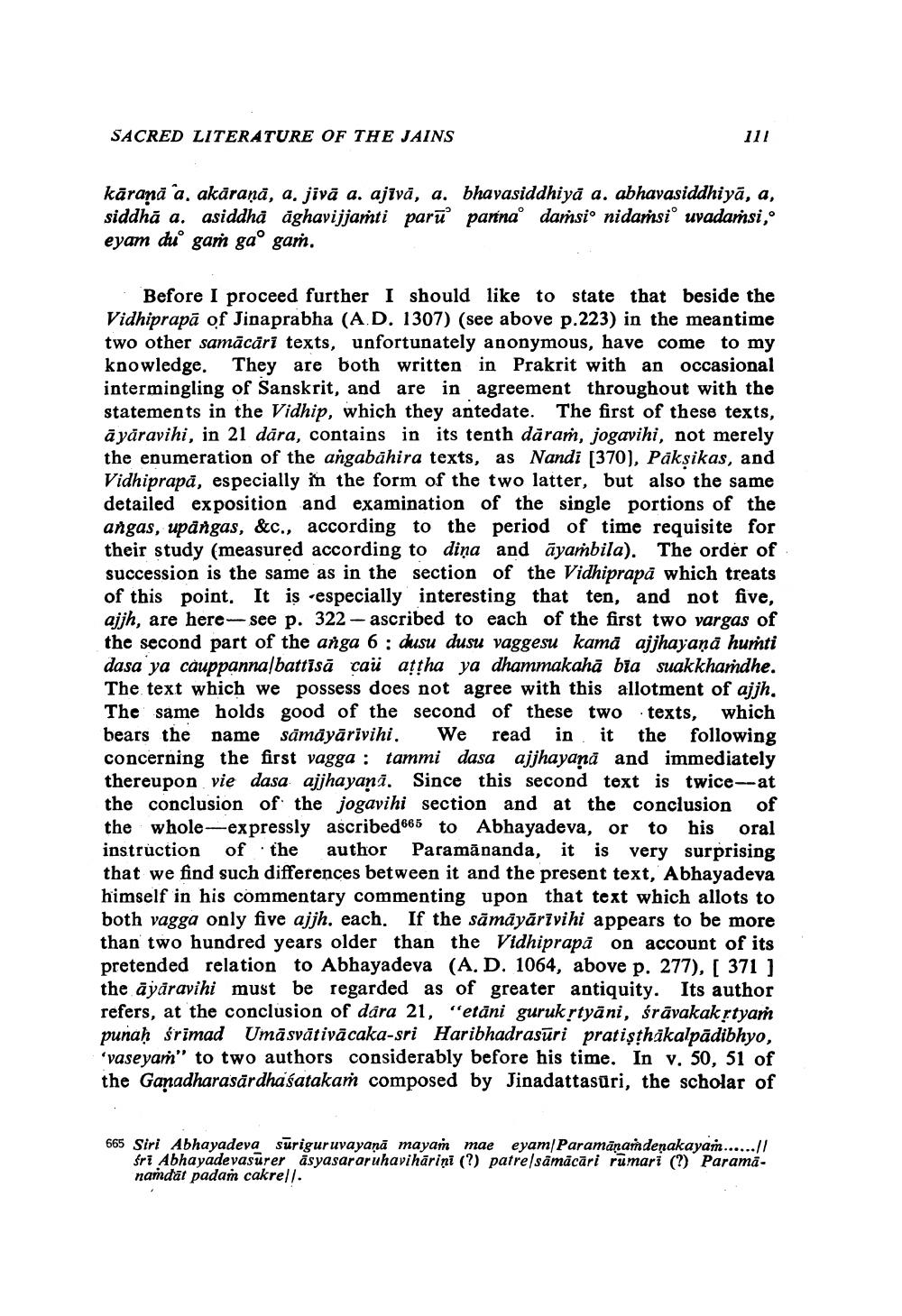________________
SACRED LITERATURE OF THE JAINS
111
kārană a, akāraņā, a. jivā a. ajivā, a. bhavasiddhiya a. abhavasiddhiyā, a, siddhā a. asiddha aghavijjaṁti parū panna daṁsio nidarsio uvadasi, eyam duo gaṁ gao gaṁ.
Before I proceed further I should like to state that beside the Vidhiprapā of Jinaprabha (A.D. 1307) (see above p.223) in the meantime two other samācāri texts, unfortunately anonymous, have come to my knowledge. They are both written in Prakrit with an occasional intermingling of Sanskrit, and are in agreement throughout with the statements in the Vidhip, which they antedate. The first of these texts, āyāravihi, in 21 dāra, contains in its tenth dāra, jogavihi, not merely the enumeration of the angabahira texts, as Nandi [370), Pāksikas, and Vidhiprapā, especially in the form of the two latter, but also the same detailed exposition and examination of the single portions of the angas, upangas, &c., according to the period of time requisite for their study (measured according to diņa and āyambila). The order of succession is the same as in the section of the Vidhiprapā which treats of this point. It is especially interesting that ten, and not five, ajjh, are here-see p. 322-ascribed to each of the first two vargas of the second part of the anga 6: dusu dusu vaggesu kama ajjhayana humti dasa ya cauppannalbattisă caüi attha ya dhammakahā bia suakkhardhe. The text which we possess does not agree with this allotment of ajjh. The same holds good of the second of these two texts, which bears the name sämāyārivihi. We read in it the following concerning the first vagga : tammi dasa ajjhayană and immediately thereupon vie dasa ajjhayani. Since this second text is twice--at the conclusion of the jogavihi section and at the conclusion of the whole-expressly ascribed665 to Abhayadeva, or to his oral instruction of the author Paramānanda, it is very surprising that we find such differences between it and the present text, Abhayadeva himself in his commentary commenting upon that text which allots to both vagga only five ajjh, each. If the sāmāyārīvihi appears to be more than two hundred years older than the Vidhiprapa on account of its pretended relation to Abhayadeva (A.D. 1064, above p. 277), [ 371 ] the āyāravihi must be regarded as of greater antiquity. Its author refers, at the conclusion of dara 21, "etāni guruk rtyāni, śrāvakak rtyam punaḥ śrimad Umāsvātivācaka-sri Haribhadrasūri pratişthakalpädibhyo, "vaseyaṁ" to two authors considerably before his time. In v. 50, 51 of the Ganadharasārdhaśatakaṁ composed by Jinadattasüri, the scholar of
665 Siri Abhayadeva suriguruvayaņā mayam mae eyam/Paramānandeņakayam......//
sri Abhayadevasurer asyasarar uhavihāriņi (?) patre/sămācāri rumari (?) Paramanandat padań cakrell.




